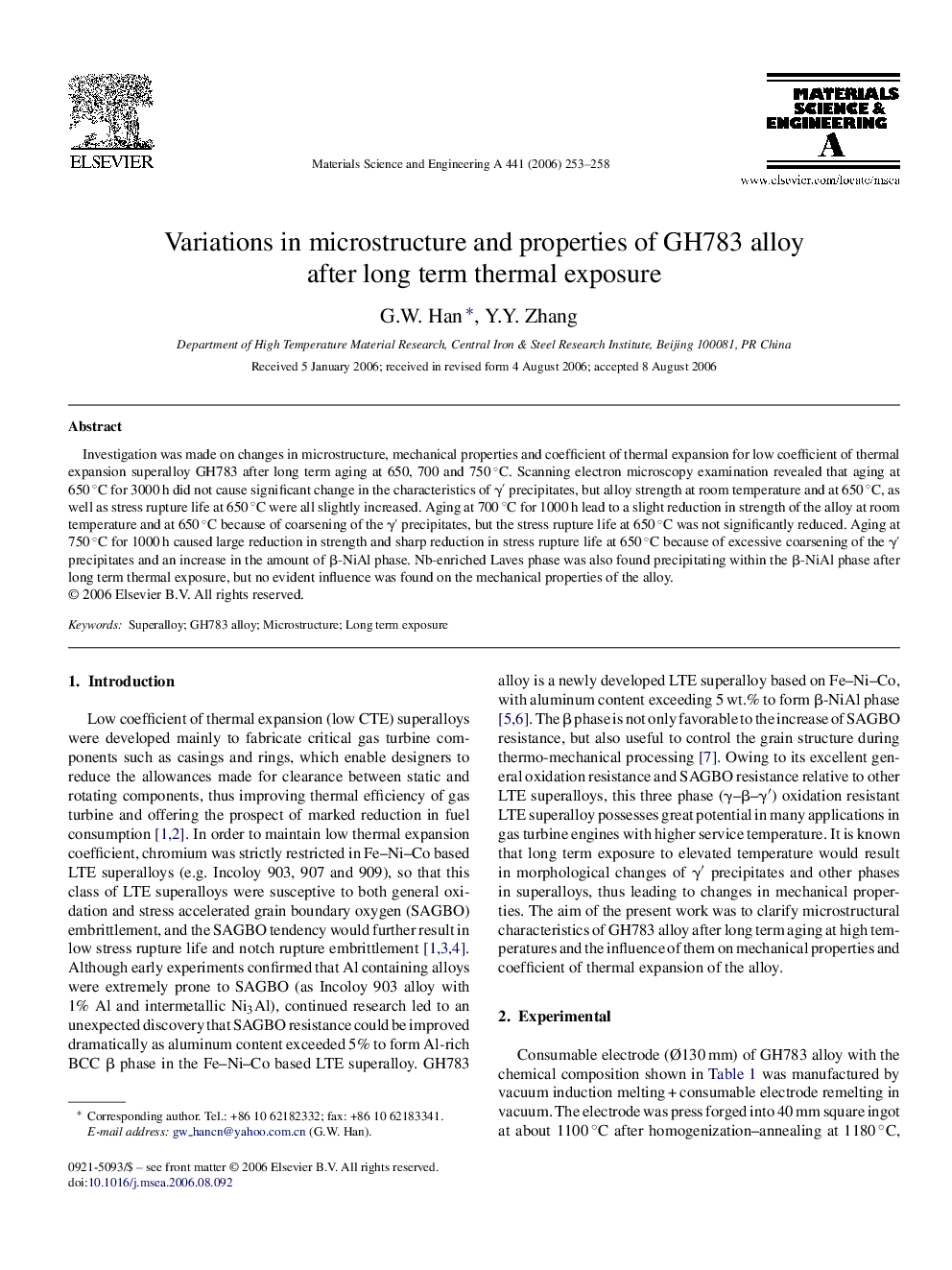| Article ID | Journal | Published Year | Pages | File Type |
|---|---|---|---|---|
| 1584786 | Materials Science and Engineering: A | 2006 | 6 Pages |
Investigation was made on changes in microstructure, mechanical properties and coefficient of thermal expansion for low coefficient of thermal expansion superalloy GH783 after long term aging at 650, 700 and 750 °C. Scanning electron microscopy examination revealed that aging at 650 °C for 3000 h did not cause significant change in the characteristics of γ′ precipitates, but alloy strength at room temperature and at 650 °C, as well as stress rupture life at 650 °C were all slightly increased. Aging at 700 °C for 1000 h lead to a slight reduction in strength of the alloy at room temperature and at 650 °C because of coarsening of the γ′ precipitates, but the stress rupture life at 650 °C was not significantly reduced. Aging at 750 °C for 1000 h caused large reduction in strength and sharp reduction in stress rupture life at 650 °C because of excessive coarsening of the γ′ precipitates and an increase in the amount of β-NiAl phase. Nb-enriched Laves phase was also found precipitating within the β-NiAl phase after long term thermal exposure, but no evident influence was found on the mechanical properties of the alloy.
